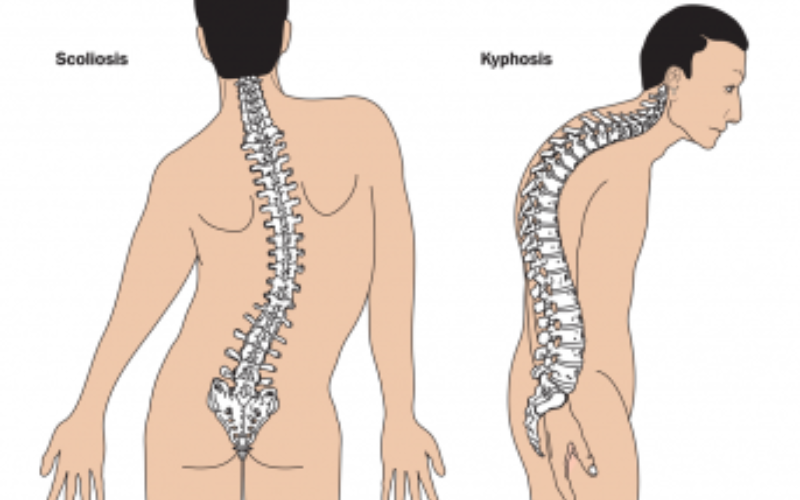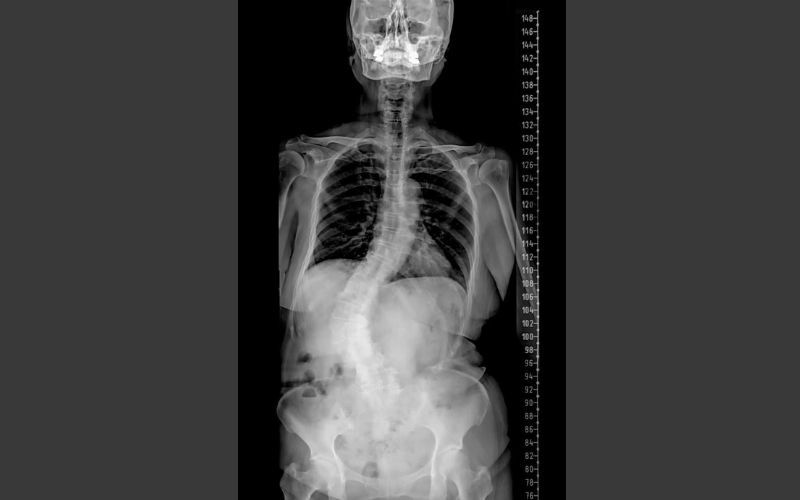Scoliosis is a condition that causes an abnormal curvature of the spine and usually appears in adults. Scoliosis is usually associated with adolescence, although it can develop or worsen at any age. In this post, we will discuss adult-onset scoliosis, including its definition, symptoms, diagnosis, and treatment options. Knowing about this problem can help people get the help they need and make choices about how to manage their spinal health.
Understanding the Onset of Adult Scoliosis
Scoliosis is characterized by an abnormal lateral curvature of the spine. Although scoliosis usually appears in adolescence, the term “adult-onset” is used to describe conditions in which the curvature develops or worsens after skeletal maturation. Some of the reasons adults develop scoliosis are degenerative changes in the spine, uneven wear and stress on the spine, or an aggravation of an unknown disease.
Risk Factors and Causes
Adult-onset scoliosis can occur in each person for a variety of reasons. Common factors that increase risk include:
- Degenerative Changes: The discs in our spine can degenerate with age, which can lead to loss of disc height and spinal instability. Potential benefits for scoliosis sufferers at any stage of the disease.
- Osteoporosis: People with osteoporosis are more likely to develop scoliosis and other spinal deformities as the disease weakens the bones.
People who have had a history of spinal problems such as scoliosis in adolescence may face spinal deformities as they age.
There may be a genetic susceptibility to progression to adult-onset scoliosis.
Symptoms and Diagnosis
Adult onset scoliosis may present with various symptoms, including:
- Back pain and stiffness
- Uneven shoulders or hips
- Visible spinal curvature
- Limited range of motion
- Nerve compression leading to leg pain or weakness
Diagnosis typically requires a series of tests, including a physical examination, a review of the patient’s medical history, and imaging studies like X-rays or MRIs. A spine expert or orthopedic surgeon familiar with scoliosis treatment can make an accurate diagnostic and severity evaluation.
Treatment Options
The severity of the curve, the presence or absence of symptoms, and the patient’s overall health all play a role in determining the best course of treatment for scoliosis in adults. Optional forms of treatment include:
- Observation and monitoring: In moderate cases when the curvature is not progressing rapidly and symptoms are manageable, regular monitoring may be indicated.
- Pain management: Non-invasive methods for managing pain include physical therapy, pain medication, and exercises to increase mobility and stability.
- Bracing: A brace may be advised to help support the body and slow or stop the progression of the curvature in some cases.
- Surgical intervention: Surgical treatment is reserved for extreme cases where non-invasive methods have failed. Surgical procedures include spinal fusion and spinal realignment.

Lifestyle Modifications and Self-Care
Patients with adult-onset scoliosis can improve spinal health and alleviate symptoms by making lifestyle changes in addition to obtaining medical therapy. Some examples of these are:
- Maintaining good posture
- Maintaining a regimen of regular exercise and stretching
- Avoiding heavy lifting and other activities that could strain your back
- Maintaining a healthy weight reduces pressure on the spine.
- Getting adjusted at a chiropractor’s office or participating in physical therapy exercises
Conclusion
While adult-onset scoliosis can be challenging to manage, symptoms can be alleviated and quality of life preserved with proper diagnosis and treatment. Talking to a licensed healthcare professional who specializes in spine health can help you decide on the best treatment option. The spine health and overall health of those with adult-onset scoliosis can be improved with proactivity, early assistance, and lifestyle changes.

